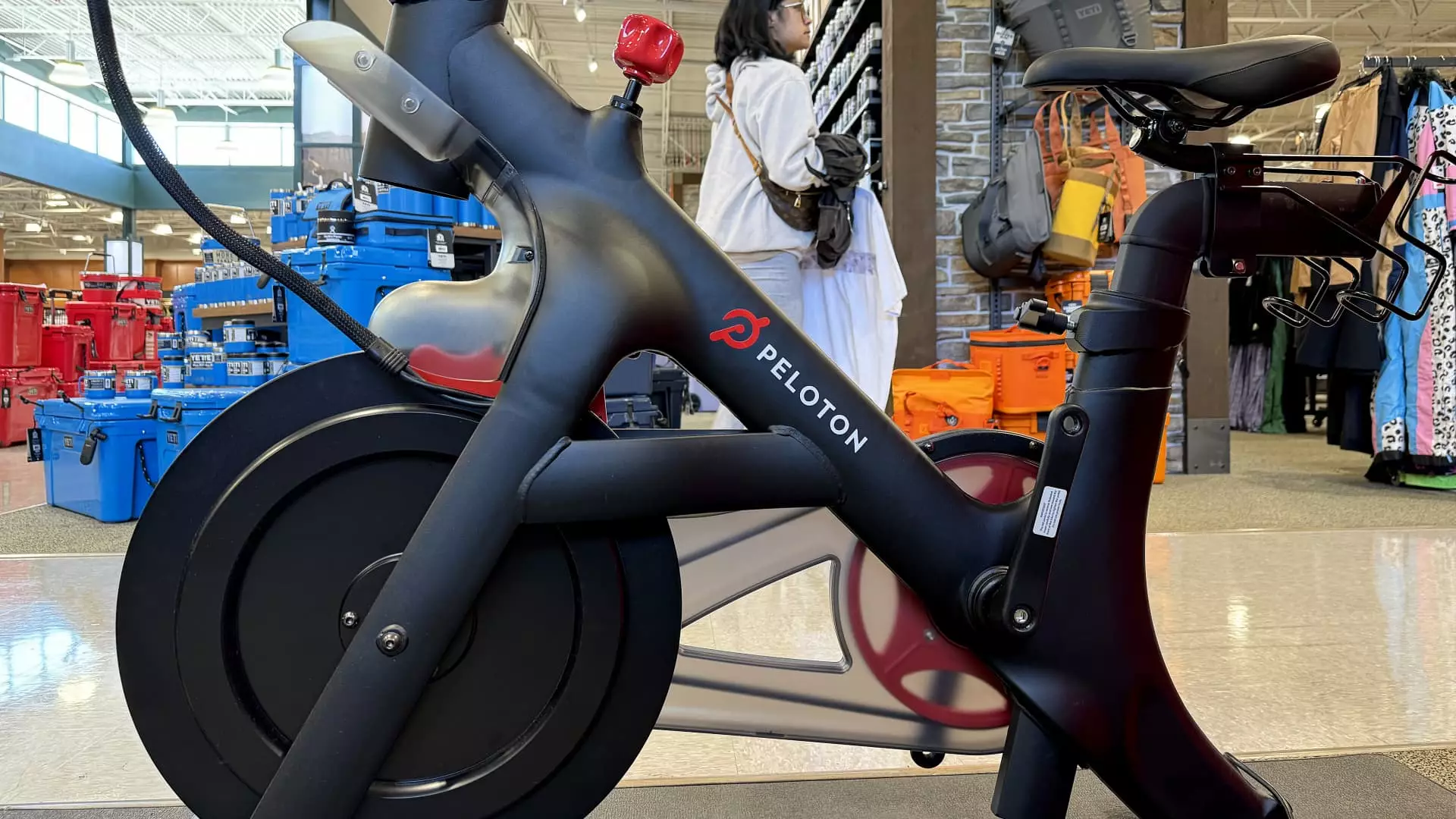In a bold yet arguably misguided move, Peloton has unveiled a new platform named Repowered, aimed at revitalizing its stalled growth by tapping into the resale market for its fitness equipment. This initiative seeks to address the vast number of underused bikes and treadmills that are gathering dust in homes across America. The idea behind Repowered may sound promising at first, suggesting a smart reuse of resources and a new revenue stream for the company. However, it raises serious questions about Peloton’s understanding of its core market and the motives behind such a strategy.
While the appeal of a marketplace to sell and buy used equipment is understandable, particularly in an era saturated with stories of overconsumption, the execution appears superficially slick but fundamentally flawed. The incorporation of a generative AI tool to assist sellers in pricing their items sounds innovative, but the reality could lead to a plethora of pricing disputes and dissatisfaction among users. If Peloton is overly reliant on AI for pricing strategies, it may dilute the organic aspects of community interactions that such a marketplace should encourage.
Pricing Challenges and Ownership Issues
With sellers keeping only 70% of their sales price, it poses the question: is Peloton positioning itself as a community-driven marketplace or simply capitalizing on the secondary sales of its products? The 30% cut for Peloton and its platform partner, Archive, feels exploitative, especially as the company has already profited from these products once before. Such a grim realization underscores the disparity in how Peloton values both its equipment and its customer base.
Moreover, the concept of providing discounts on new purchases as an incentive for selling used gear sounds attractive on paper but could dilute brand loyalty. Will existing customers feel valued when they see the company focusing on maximizing profits from those who can no longer afford to keep their machines? Sense also prevails in acknowledging that the resale of used fitness equipment raises broader questions about consumer behavior and long-term satisfaction. The very reason many bikes end up for sale in the first place reflects dissatisfaction rather than delight with the Peloton experience.
Market Competition and Consumer Sentiment
Peloton’s entry into the resale market doesn’t exist in a vacuum. Platforms like Facebook Marketplace, as well as competitors such as Trade My Stuff, are well-established in the secondary market for used fitness equipment. By launching Repowered, Peloton is not only challenging these platforms but also contradicting its original ethos of creating a tight-knit, engaged fitness community. Instead of fostering direct connections with customers, the brand risks becoming an intermediary in a transaction that could have been personal and satisfying.
Furthermore, industry observers often grapple with the notion that many Peloton owners don’t just stop using their bikes—they abandon the brand altogether. It’s heart-wrenching to see so many people being sold the dream of a healthy lifestyle, only to see their expensive machines become mere decorations in their homes. For every success story of enthusiastic Peloton users, there exists a far greater narrative of disappointment. Repowered seems not only like a solution born from necessity but also as a reactive measure rather than a strategic decision that genuinely addresses customer pain points.
Peloton’s Identity Crisis
Peloton’s move towards resale might just signify an identity crisis within the company. Is it a high-end fitness equipment manufacturer or a middleman profiting from its users’ failures? The strategic vision seems muddled. Instead of reinforcing brand loyalty and promoting robust community connections, Peloton is dallying in the secondhand machinery without acknowledging the emotional and financial toll a forsaken bike represents.
In many ways, this marketplace initiative could backfire. Enthusiastic Peloton customers may be drawn into trusting the brand less if they feel it’s capitalizing on the parts of the fitness journey they would rather forget. When customer experiences turn into mere collateral for revenue generation, a company risks losing the very connection that is central to its community-driven model.
Peloton might be unveiling Repowered with sincere intentions, but its potential drawbacks cannot be ignored. As the focus shifts towards reselling used equipment, one can’t shake off the looming uncertainty that arises from a corporation negotiating the gray areas of consumer satisfaction and business profitability. In a market increasingly skeptical of such profit motives, Peloton must tread carefully to avoid alienating its loyal fanbase.

Leave a Reply